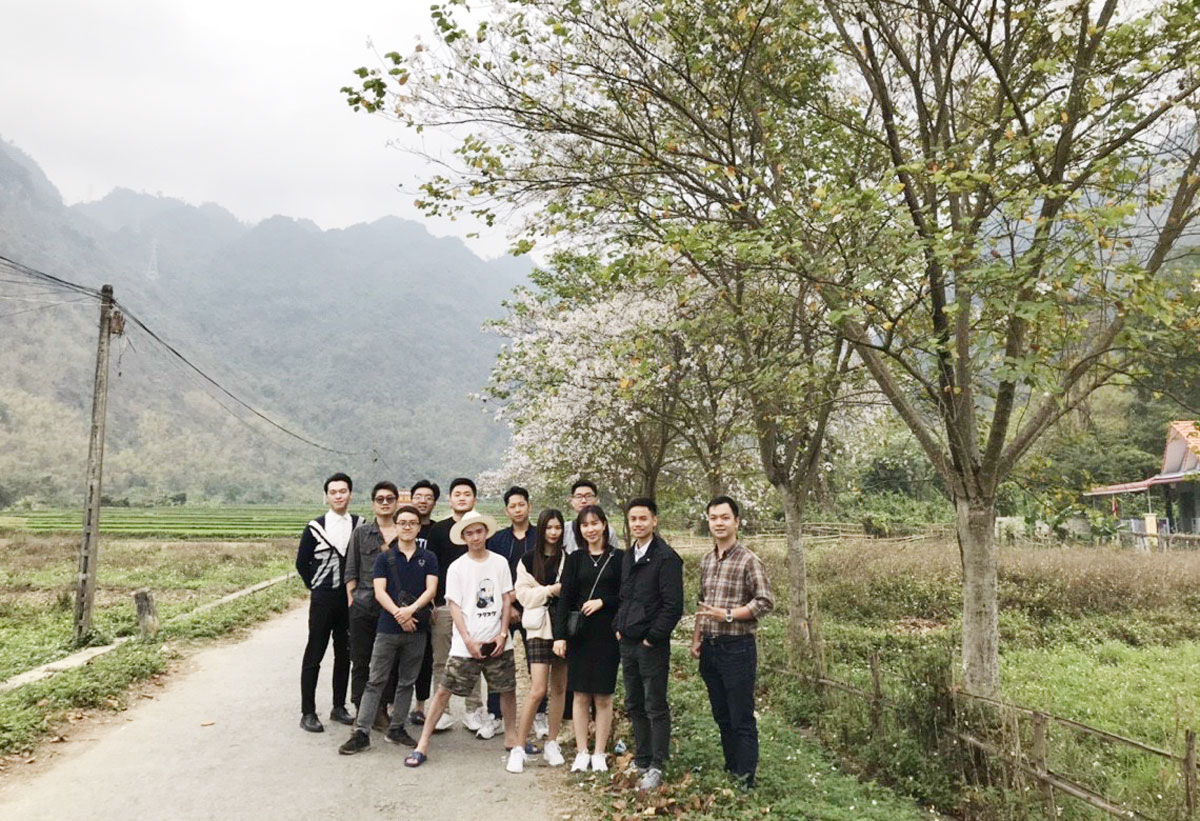


 Visitors take photos with Ban
flowers in Van village of Mai Chau town (Mai Chau district).
Visitors take photos with Ban
flowers in Van village of Mai Chau town (Mai Chau district).
February and March is the blossoming peak of Ban flowers. The road to Mai Chau valley winds through fruit-laden trees in orange farms in Cao Phong and pomelo orchards in Tan Lac.
From the peak of Thung Khe, the Mai Chau valley looks like a beautiful girl wearing a green dress with white flowers on it. Ban flowers blossom on the top of mountains, on cliffs, family’s gardens, and along roads. The road from Tong Dau commune leading to the centre of the district is lined by Ban trees which have shed most of their leaves to show off their flowers. Looking closer, full-blossom flowers are like flying butterflies. Some flowers have a purple petal among white ones, some have a light pink petal. The Ban leaves are shaped like horseshoe, but many Thai girls like to think that they have the shape of double hearts.
Kha Thi Tuyet, a Thai girl from Mai Chau town told us the local story about Ban flower. The story has it that a beautiful girl named Ban and a smart man named Khum were in love with each other. Unfortunately, Ban’s parents did not accept their love because Khum was poor. Failing to persuade her parents, the girl left her home on a Spring morning to look for her lover. She went and went deep into the forest, and finally collapsed and died. In the spot where she died, trees grew with thousands of flowers, the petals of which look like the girl’s beautiful hands. Khum came to the place but all he could find was Ban’s head scarf. He desperately called her name until he died and became a bird named Loc Khum. Since then, when spring comes, white Ban flowers blossom across the forest, while Loc Khum birds keep on singing like the voice of the man calling his lover throughout the Ban flower season.
There is another story about the flower, which says the flowers have their origin in the white cloth that local people tied on trees in mourning of local insurgents fighting against evil and oppressing forces./.